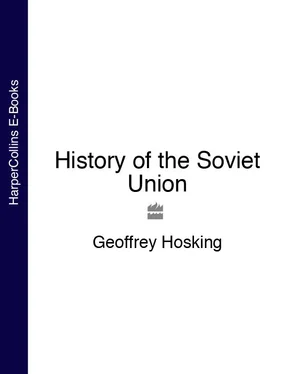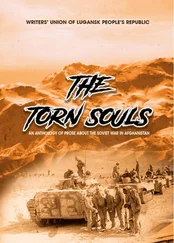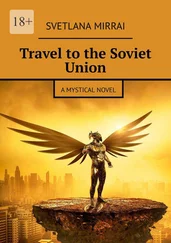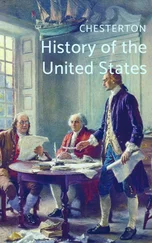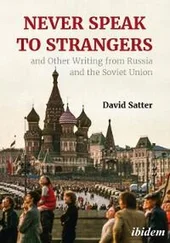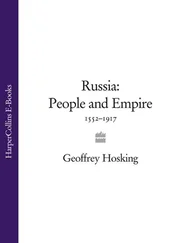In the end, even the church was taken into service. The process began in the seventeenth century, when its head, Patriarch Nikon, tried to provide for the church’s imperial role by correcting liturgical mistakes which had crept into the prayer books over the centuries, and which he felt would shame the Russian Orthodox Church in its relations with other churches. He was also ambitious for the church to play a stronger role in the state. Although Tsar Alexei dismissed him as a dangerous rival, the reforms he had sponsored were ratified by a Church Council. These reforms aroused vehement opposition among both priests and laity, who felt that the integrity of the Russian faith was being violated by foreign importations. All the strength, exclusiveness and defensiveness of Russian national feeling was exhibited by the Old Believers, those who clung to the old liturgical practices, and were prepared to be imprisoned or exiled, or even commit mass suicide, rather than submit to the new and alien practices. The Old Belief survived right up to the revolution of 1917, and beyond, depriving the official church of many of its natural, indeed most fervent, supporters.
Perhaps the most significant aspect of this schism, whose importance for Russian history can scarcely be exaggerated, was that the church became dependent on the full coercive support of the state in implementing its reforms. The way was thus prepared for. Peter I, in the early eighteenth century, to abolish the Patriarchate, symbol of the independent standing of the church, and replace it with a so-called Holy Synod, essentially a department of state, headed moreover by a layman. Peter did this with the same aims as Henry VIII in England: to bring the church under firm state control, to discipline it and make it fitter to fulfil the tasks the state had in mind for it, such as education, social welfare and the pastoral care and supervision of the common people. His principal ecclesiastical theorist, Feofan Prokopovich, insisted that the state should have undivided and indisputable sovereignty on earth, including the right to interpret God’s law. Any less clear arrangement he deemed dangerous, since it might mislead ordinary, gullible people to entertain the ‘hope of obtaining help for their rebellions from the clergy’. This secular approach to church-state relations, and the obsession with civil disorder, was close to the thinking of many European Protestant thinkers at the time, notably Thomas Hobbes. Shades of the Leviathan hung over Russian society from then on.
Peter I also impugned Russian traditions in numerous other ways. He moved the capital from Moscow to a swampy outpost on the Baltic coast, simply because that sea gave direct access to the ports of Europe, in whose more ‘progressive’ ways Peter hoped for salvation. In the new city of St Petersburg, he required his nobility to adopt European fashions in everything from education to clothing. When some of his courtiers refused to shave their beards–honoured as a sign of manhood in Muscovite custom–Peter took the shears and did the job personally. Both the changes he promoted, and his uncouth manner of imposing them, aroused considerable opposition. Old Believers, indeed, regarded him as the Antichrist.
Catherine II completed the subordination of church to state by expropriating the church’s huge landholdings, which left the priesthood poor and dependent on their parishioners for subsistence. The clergy became in effect a subordinate estate, having neither the education nor the financial independence to cultivate a distinctive stand, even in spiritual matters. They were also a more or less closed order, since clergy sons usually had little choice but to take their education in a church seminary, and then to follow in father’s footsteps. The high culture and politics of the period were essentially secular: priests were regarded by most intellectuals as beings of inferior education and status, peddling superstition to pacify the plebs. It would be difficult to overstate the importance of this subordination of the church. It meant that Holy Russia, still haunted by visions of unique religious rectitude, was governed in a radically secular manner, outdoing most Protestant states, and was acquiring an almost aggressively secular culture.
Russian government in the nineteenth century is often described as ‘reactionary’, but this view is based on superficial comparisons with West European political systems. In fact, from the time of Peter I, Russian governments were radical and modernizing to an almost dangerous degree. They were so because they felt they faced a potential military threat from European nations which on the whole were technically better equipped. It was to face this challenge that Peter sacrificed so much to the creation of a strong army and navy, with a modern armaments industry to back them up, and overhauled the administration of the country, the tax system, education and even social mores. He regarded all the country’s resources–material, cultural and spiritual–as being at the service of the state for the good of society as a whole. His successors continued his work, but they faced both the advantages and disadvantages of weak social institutions. Advantages, in that no fractious nobility or urban patriciate possessed the independence to impede the monarch’s commands. Disadvantages, in that the existing aristocratic and urban institutions (the elites of town and country) were often not even strong enough to act as transmission belts for orders from above, as they did in other European countries; in their absence the government’s intentions often petered out ineffectually in the vast expanses of the landscape.
For that reason some Russian monarchs, notably Catherine II in the late eighteenth century, and Alexander II in the 1860s, actually tried to create or strengthen what Montesquieu would have called ‘intermediary bodies’, that is, self-governing associations of nobility and of townsmen, with a direct responsibility for local government. Others–Paul I, for example, and Nicholas I–regarded such associations as self-seeking and divisive, tried to curb them and to rule through monarchical agents, controlled from the centre. Much of the history of Imperial Russia’s government between Peter I and the revolution of 1917 is to be found in this swing to and fro between local autonomy and strict centralization, between support of local elites and distrust of them.
The radical intelligentsia of the nineteenth century were in some ways the unnatural offspring of this frustrating relationship. Most of the radicals came from the social strata from which the tsarist government recruited its central and local officials–the minor nobility, the clergy, army officers and professional men–and they typically went through the same education system as the country’s civil servants. They espoused many of the ideals of the modernizing wing of the bureaucracy: progress, equality, material welfare for all, the curbing of privilege. Frustrated, however, by the hierarchy and authoritarianism of the state service, and by the gross discrepancy between ideal and reality, they underwent a conversion, usually as early as their student days, and harnessed their vision to a revolutionary ideology.
In the absence of a genuinely conservative political theory, and lacking the support of an independent church, the Russian imperial state often found itself extraordinarily vulnerable when faced with the activists of the revolutionary movement. In effect the state’s own ideals had been hijacked by its opponents, and as a result the government found itself being deserted by those who should have been its natural supporters. Even Dostoevsky, a writer of conservative views, once said that, if he knew that revolutionaries were going to blow up the Winter Palace, he would not report the plot to the police, for fear of ‘being thought an informer’: ‘The liberals would never let me hear the end of it.’ Without necessarily approving of terrorism, in fact, members of the nobility and liberal professions sometimes felt a kind of sympathy for the terrorists’ world outlook. The impeccably liberal Kadet Party in 1906, for example, refused publicly to condemn terrorism for fear of discrediting itself in the eyes of public opinion. In this way the revolutionaries came to constitute a kind of ‘alternative establishment’.
Читать дальше
